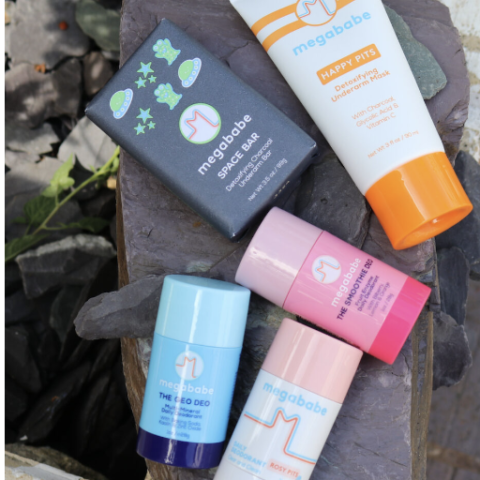A Fashionable Void
By Matthew Howard
The Fashion industry is now becoming more than just garments, models and couture. The world is getting closer to a point of physical and digital becoming one, with clothing that is allowing us to perform better, interact with our surrounding environment, and change shape and colour. Are we leaving behind the traditional world of fashion and if so what void will fill it?
Image SUMB0D1
With the boom of the Metaverse, some technologies project AR into different environments and digital garments.
“For me, costume and movement is an expression which is created as a dialogue and interaction between the body’s movement and the materiality of a garment. I find it important to connect the idea of the body as a metaphorical space as a place where space is transformed and the idea that a garment is more than just an object”.
Mathew Howard
Matthew is a London-based multidisciplinary artist, whose work is founded on movement as a raw creative material alongside its connection with fashion. Fascinated by the different forms of art and cultures after travelling the world, his work finds its inspiration from the social, architectural and historical aspects of cultures he has explored and the natural world. Where he currently is researching the relationship between movement and fashion. he asks:-
“How can a costume direct the body’s movement and this movement direct the design development of garments?”
There has been a big push into sustainability with questions about what is and what is sustainable. Some designers have been looking into eco-friendly and safe procedures for fabrics to be reused to create new textiles but they are also looking at ways for the textiles to decompose.
There is a start for designers to be showing their collections in other ways instead of the traditional convention of runways, incorporating live theatre, opera and performances.

Digital Fashion
If there is one thing, we have learnt from shows in 2022 is that the future of fashion may well be digital. Fashion shows are becoming more digitalised, from in-game avatars, NFTs, augmented reality and the Metaverse opening new experiences and possibilities for the industry. This last year has seen the Metaverse Fashion Week (MVFW) unlike traditional fashion shows that are only permitted to guests, MVFW is free and open to everyone through a simple browser-based platform Decentraland.
Discussions from students and industry professionals at UAL Central Saint Martins and London College of Fashion have said that the future of fashion and fashion shows point to being showcased on platforms like Decentraland, SUMB0D1 and others through the Metaverse.
As they have a negative impact on the climate through reducing the waste of fabric waste, setting up these elaborate stages, transporting models and people to and from events etc. Digital software such as Clo3D allows designers to see garments in a 3d setting, manipulating them in ways the physical garment would traditionally move – as well as being able to have patterns available from the initial 3d design.
This discussion brought up that digital fashion could be traditional fashion with more sustainable ways of crafting and presenting new work.
Fashion shows becoming something other than just a runway.
At the Maison Margiela A/W22, John Galliano stripped down the white runway format for his collection and brought together a multidisciplinary stage production. Galliano thought it would be ‘wonderful to embrace fashion, theatre, and digital’. A collaboration with British theatre company Imitating the Dog, where they realised a Cinema theatre version of Inferno performed at the Palais de Chaillot.
The show utilised an on-stage screen being live-streamed to the audience in an in-person cinematic motion captured experience happening in real-time with models lip-syncing to a rehearsed script following the story of a desperate pair of young lovers on the run.
Could this performative theatre experience be the new way for designers to share their work without presenting their collections on the conventional way of runway?
Designers choosing to use theatrical methods of showcasing their work allows for new and exciting collaborations from makers in different disciplines to come together. Throughout the year dance, theatre, opera and other art forms have been used to enhance or showcase collections as they give new possibilities to the designer’s collections. Think as an example of the Preen show where dancers performed whilst wearing the collection and there was not a model in sight.

Looking at it from a dancer’s experience; dance speaks about the body and freedom and fashion speak about the same things. Both fashion and dance are all about the same things to extenuate the body whether it’s to conceal or to reveal through silhouettes. Movement helps to animate garments before your eyes, creating something impactful rather than something a distraction. As the body moves the garments become something else other than an object being worn – it becomes an experience as an extension of the body.
Producing Textiles Sustainably
Possibilities of Lab-grown leather and textile fibres from fruit peel. The global textile industry is in the process of looking for greener alternatives to combat the pollution of synthetic materials caused by plastic lead products that are often non-recyclable. This is increasing the awareness of consumers on the quality of the product and their choices made when shopping.
A by-product of animal leather is a material which is embedded in our DNA, used as a status symbol since the times of living in caves. Leather has become a part of the luxury segments in the industry, with designers and manufacturers creating this higher-quality leather that attracts consumers. Leather alternatives are made from mushroom or kelp, yet their durability is not the same are leather as it is more likely to tear quicker through the use of the wearer.

Image SUMB0D1
Synthetic and natural fibres have set limitations in terms of their durability and capacity in what can be made from them, which has led companies and manufacturers to look out for more alternative options in producing fibres. Currently being experimented with are bamboo, banana, corn, milk and orange as these products are easily obtained and regularly consumed. These alternative fibres are gaining increased popularity amongst designers across the world.
So far, the introduction of these new alternative textiles has been slow but their increase in popularity is making them a more desirable alternative to non-recyclable materials. But their use will help diminish the emissions of toxic chemicals and greenhouse gases involved in the industrial manufacturing processes of non-sustainable material.
This article came up from conversations with students and technicians at UAL Central Saint Martins and London College of Fashion. Along with personal research into these areas of interest. Could this be these alternatives be the future of producing textiles more sustainably? There is so much more to come…
If you enjoyed reading A Fashionable Void then why not read Heal the World Here
.Cent Magazine London, Be Inspired; Get Involved



